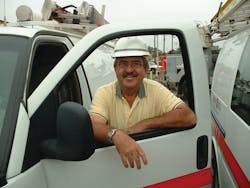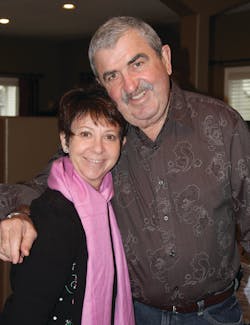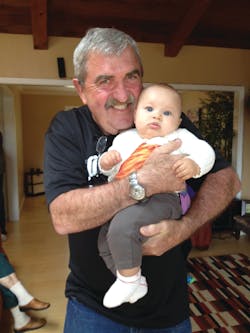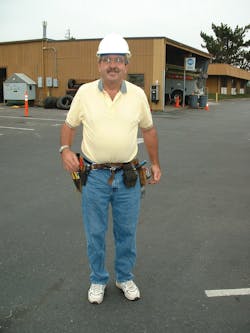Thirty-three years ago in March 1989, the publisher of what was then OSP Magazine, now ISE Magazine, asked me to write a monthly column digging into issues of locating, repairing and maintaining the copper infrastructure. Now, at 78 years old and having written just over 400 articles, it’s time to pass the torch to others with a richer background than I have in the crossover from copper to fiber. However, make no mistake, copper will be around serving more remote areas and will maintain a role in the communication infrastructure.
That’s why I’m so pleased to have stumbled into the telco industry initially as a telephone repair technician in Minnesota. When people ask when my job as a telephone field technician began, I tell them “before we had the green telephone trucks, we had green horses and that’s when I started”. Later, I transitioned to a sales support role at Dynatel Corporation who made test sets for field technicians. My role was to provide test set training to companies who purchased equipment. When Dynatel was purchased by 3M, I continued with sales support until I eventually launched my business as a trainer of copper cable technicians.
Over so many years, I’ve trained field techs in nearly every state and in Canada multiple times. I also trained in Guam, Micronesia, Korea, Japan, and Hong Kong to name a few. Often, the techs I trained (or their managers) would insist I have home cooked meals with their families—much appreciated given how little I was in my own home. The folks in Guam had a huge outdoor BBQ when I visited. Sometimes I was taken on fishing or hunting trips and the occasional golf game. I was and am still honored.
Many technicians were frustrated yet tried their best to keep an already decaying infrastructure working. Their desire to do their best under tough conditions drove me to give 200%.
You see, long before fiber was installed, we were fully dependent upon copper. Yet, there were many companies that didn’t invest in the technicians and the maintenance of a healthy copper infrastructure. They acted like the number of copper pairs was limitless so they used a “cut to clear” approach. Don’t fix it, just jump to a new pair and save time. Eventually, the good pairs were exhausted and expensive new cable had to be laid.
That said, many independent telcos that were deeply invested in delivering quality service knew the only way to do that was to support their technicians. Today, those companies still have a copper infrastructure that is fast and highly reliable. Thank you to all of those who invested in the plant AND their people.
Thank you to some of the amazing folks I’ve kept as friends through the years: Forrest Collier at Telephone Electronics Corporation (TEC), Randy Lis at PRTC, Ed Russulot semi-retired but still working for Megger, Tony Wilson semi-retired but still doing consulting, and Mike Townes, Bell South (ret). There are many, many others who made my time in this business fun and meaningful. I may not have mentioned you because I’ve forgotten your names—that happens at 78. Nevertheless, I picture your faces often.
These past many years have left me with memories of some of the best times of my life besides time with my family. Thank you to the loyal readers and hard working technicians who were my students. I appreciate the telecom managers who fought to make a difference at their companies and I’m forever grateful to the many ISE EXPO attendees who came to my seminars.
Signing off
I do hope you will all consider attending ISE EXPO 2022 at the Colorado Convention Center in Denver, August 24-25. It’s a great opportunity to network and to learn. And, Denver is a favorite town for me and has some great restaurants! You won’t be sorry. Finally, as always, I invite you to call, text or email me with questions, tips or just to chat: [email protected]; 831.818.3930.
Donald and Susan,
One of my favorite quotes about leadership is by Jack Welch.
“Before you are a leader, success is all about growing yourself.
John Francis Welch Jr. (November 19, 1935 – March 1, 2020) was an American business executive, chemical engineer, and writer. He was Chairman and CEO of General Electric (GE) between 1981 and 2001.
As an editor, I’m going to adapt this quote to share what I know about you both:
“Natural leaders never worry about growing themselves. They are passionate about growing others.”
Thank you both from the awkward girl who met you when she was a teen. You have forever mentored and grown me more than you know.
Sharon Vollman
Hello, Don
This is Tony Wilson. Ed tells me you are closing the chapter of writing articles for OSP/ISE! I’m sorry for the circumstances prompting this, but what an illustrious career you’ve had.
It’s been a long time since you and I conducted the classes in Atlanta and Austin, but they still remain as one of my fondest memories.
Now that you are retiring, I may very will be the oldest active Telecom rat left!
Take care my friend,
Tony
About the Author





